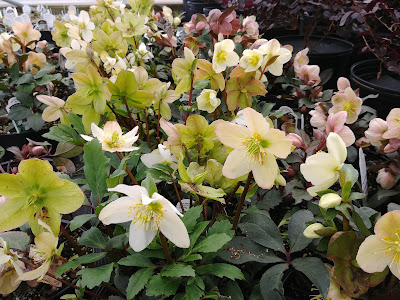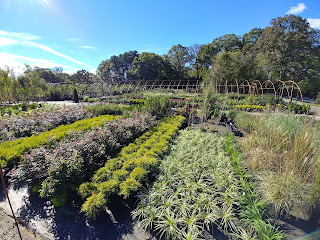SPRING HAS ARRIVED!
Spring has sprung and the world is coming alive! What a
wonderful time of year it is. It seemed the winter would never end and now the
birds are singing, the peep frogs are peeping and the crickets are chirping.
Life is good! Now is the time of year that all that cold weather work outside
really pays off. Now you can actually start to drop those seeds and plant your
plugs and get this garden party started.
Our vegetable garden
should be calling out to us about now. It is longing for its usual capture of
tiny seeds that it will nurture and grow. Deciding what to plant can be based
on your preferences or your needs. Either way, you can put those seed directly
into the ground with all confidence that the tiny, tender plants that
will soon emerge, are safe.

Tomatoes are a staple that we find in just about every
garden. They are easy to grow and give us enough fruit to provide for our
family and usually some neighbors too. These are also good options for your
patio plot or container garden. You can grow these from seed that you put
straight in the ground but you may find greater success if you start them
indoors, acclimate them to sunshine, and transplant the seedlings to your
garden. Or you may simply buy young plants from your local nursery or garden
center. That is the easiest way. Loose, well-drained soil is best for these
plants and they thrive in full sun. Consistent moisture in well-drained soil is
a must. You will need to stake or cage your tomato plants and do not remove any
leaves that may be shading some of the fruit. Follow these simple guidelines
and you will have fresh tomatoes in no time. There is nothing quite as
delicious as a fresh tomato sandwich on a hot summer day unless it is one with
basil leaves on top.

Peppers are a favorite among gardeners. These plants are
high yield when given proper care. Water deeply and provide good drainage and
you should have plenty of peppers to pick. Peppers are not frost tolerant and need warm
soil, so they definitely need to be planted after the threat of frost, which in
our zone, zone 7, is usually around the first of May. The plant itself is an
attractive addition to any garden. Some smaller peppers such as banana peppers
or jalapeño peppers are often used in pots for their ornamental properties as
the peppers will turn to bright red on the vine if not harvested in their green
stage.

Lettuces can be sown straight into the ground and fare much
better through the early season than in the hottest part of the growing season.
However, you can still grow this crunchy favorite nearly all year long with
properly timed re-sowing of new seeds. This leafy lovely will attract critters
to your garden so you may need to take some precautions such as fencing or
netting to keep the nibblers away. This can be put into containers and grown
quite successfully.
Cucumbers are a long time favorite of the container gardener
as they will grow vertically with a little guidance. The cucumber has two ways of growing. There
are the vining types, best for container growing in tight space and the bush
type that are good for smaller areas and containers. Many gardeners use fencing panels or PVC arches for their vining
cucumbers while some will use a trellis or even wooden stakes and some twine.
Whatever you choose for your cucumbers. The key to an abundant cucumber crop
is consistent watering.
These are just a few
of the available choices for your vegetable garden. But what about the flowers?
Maybe you prefer blooms to veggies or maybe you are a gardener of both! Either
way we could not talk about spring gardening without mentioning the bloomers.

Let’s kick this
section off with the geraniums. These longtime favorites have been a southern
staple for the front porch for generations. While they are not frost tolerant
at all, you want to make sure you don’t get them outdoors too soon. These
beauties love full sun but they do appreciate a reprieve in the evenings,
especially in hotter climates. They like their soil a bit on the dry side.
After a thorough watering, they appreciate fast draining soil. Pinching them
back will keep them looking bushy and not so leggy. The blossoms also need to
be broken off as they fade. Most people grow this plant in containers. In the
right spot though, they can be planted into the ground and either pulled up at
the onset of cooler weather or you can take cuttings to start for next year.
Keep in mind that in zone 7 this is not a perennial plant. With consistent watering and a weekly dose of liquid fertilizer, you should enjoy geranium success.

Let’s hear it for
impatiens! Who doesn’t love these gems of the garden? For a few years, they were
not seen as often due to a widespread disease issue. Now, with new varieties
that have been bred to resist disease we expect to see a rise in their
popularity again. They will produce an abundance of flowers if they are placed
in filtered light or morning sun where they can spend part of their day in the
shade. These are excellent container flowers or if placed in the right location
they make very dramatic border plants.

One of my favorites is the petunia. These are some of the
easiest flowers to grow. They complement any porch or landscape. These summer
bloomers will tolerate some shade but really show off their blooming power in
full sun. If you will remove the fading blooms, your petunias will be
encouraged to produce many more. This plant will produce blooms into early fall
with regular watering and water-soluble fertilizer. Some of the newer
varieties such as Supertunias, don’t need the dead blooms picked off.

Finally, the one plant that really needs to be in your plans
whether you choose vegetable gardening or flower gardening or both, is the
marigold. These come in many different varieties and are certainly beautiful,
but what makes them so beneficial is their ability to deter pests of all sorts.
While it is their scent that deters some nibblers and suppresses nematodes, it
is their attractiveness that draws Japanese beetles and slugs to them. Marigolds provide a food source so that insects leave the other members of your garden family alone- a beautiful sacrifice from a beautiful plant.
These are only a tiny portion of all the possibilities for
your garden and every garden is as unique as the gardener. When we finally make
it to these first days of the planting season, it seems to stir joy in our
hearts that only gardening can. My hope is that each of us can reach for a tiny
hand and look into some very young eyes and pass this joy right along. It is
the future of our world that lies beneath the soil and the roots of our
families that lie just beneath our skin. When the two come together, it builds hope for the future and memories for all time.
HAPPY GARDENING!





































